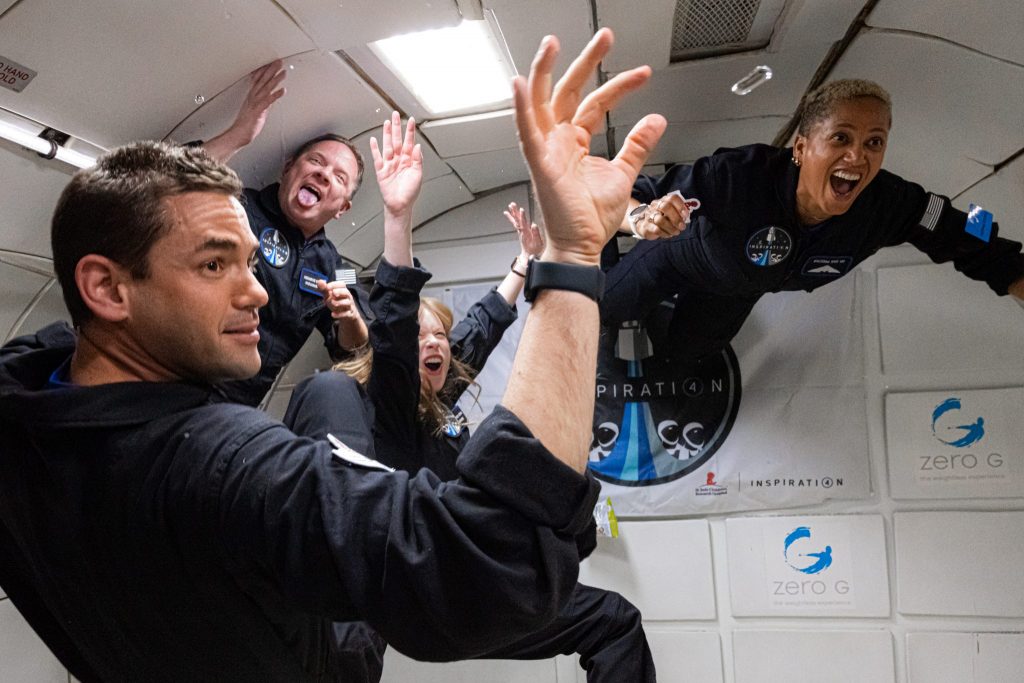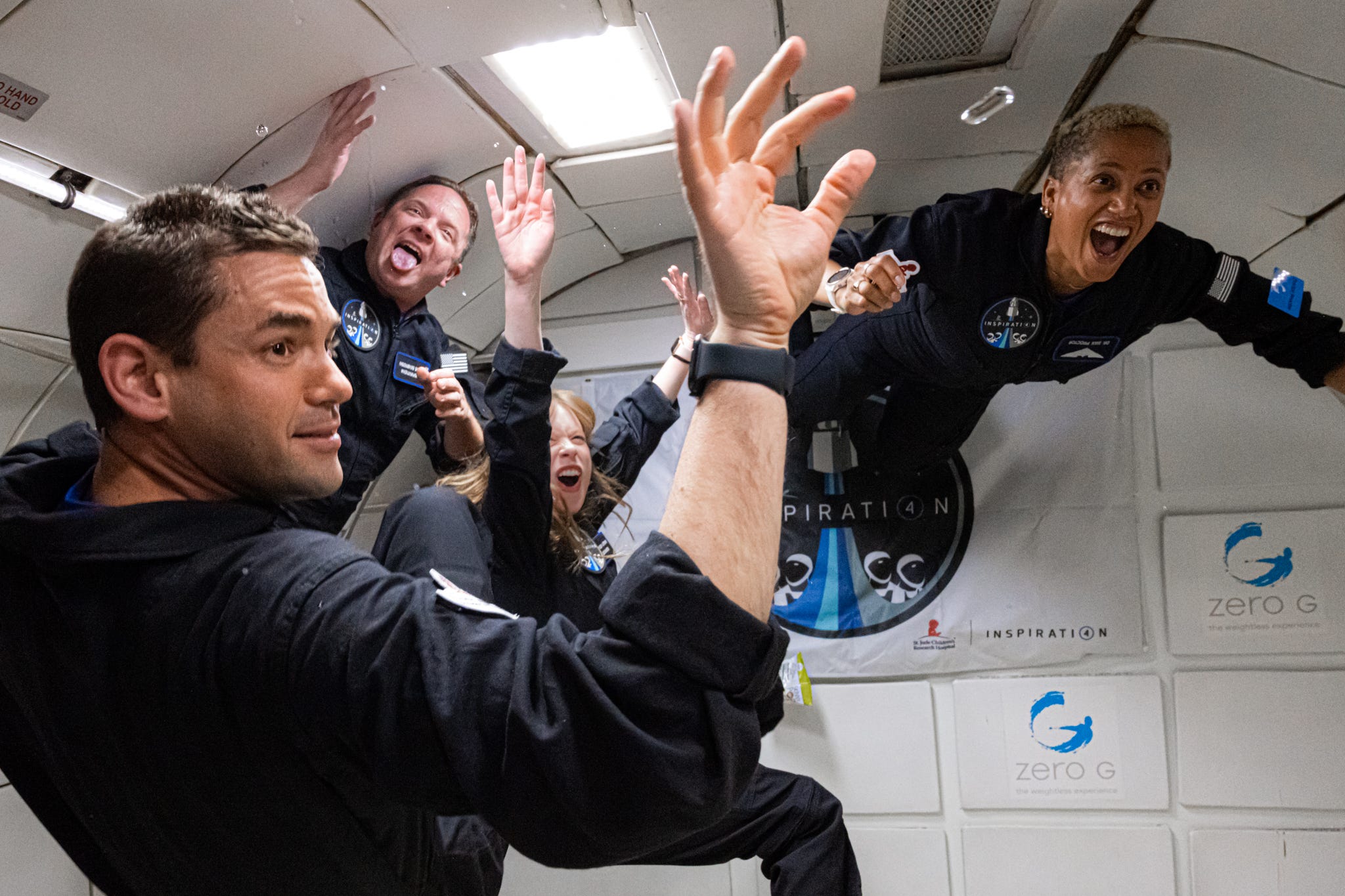
Inspiration4/John Kraus
- SpaceX is launching its first civilians into orbit Wednesday, weather permitting.
- The crew of this Inspiration4 mission completed a five-month training program to prepare.
- Nonetheless, SpaceX is sending them up with zip ties and sedatives in case someone becomes a danger to themselves or others.
- See more stories on Insider's business page.
SpaceX plans to launch a spaceship full of regular people into orbit on Wednesday evening, without any professional astronauts onboard.
After five months of training, the four-person civilian crew is scheduled to roar into space aboard SpaceX's Crew Dragon spaceship. The mission, known as Inspiration4, calls for them to orbit Earth for three days before returning. You can watch the launch live here.
Billionaire Jared Isaacman chartered the flight from SpaceX and is both footing the bill and commanding the spaceship. He gave the other seats to Hayley Arceneaux, who survived bone cancer as a child and now works at St. Jude Children's Research Hospital; Chris Sembroski, an Air Force veteran who works for Lockheed Martin; and Dr. Sian Proctor, a geoscientist who serves as an analogue astronaut in simulations of long-term Mars missions.
SpaceX has tried to anticipate and plan for anything that could go wrong, according to Axios space reporter Miriam Kramer.
"They also have to prepare for worst-case scenarios like someone on the crew becoming a danger to themselves or others," Kramer reported on Axios' "How It Happened" podcast last week. "There are zip ties and medication on board in case somebody needs to be sedated."
'Nobody's gonna snap that way'
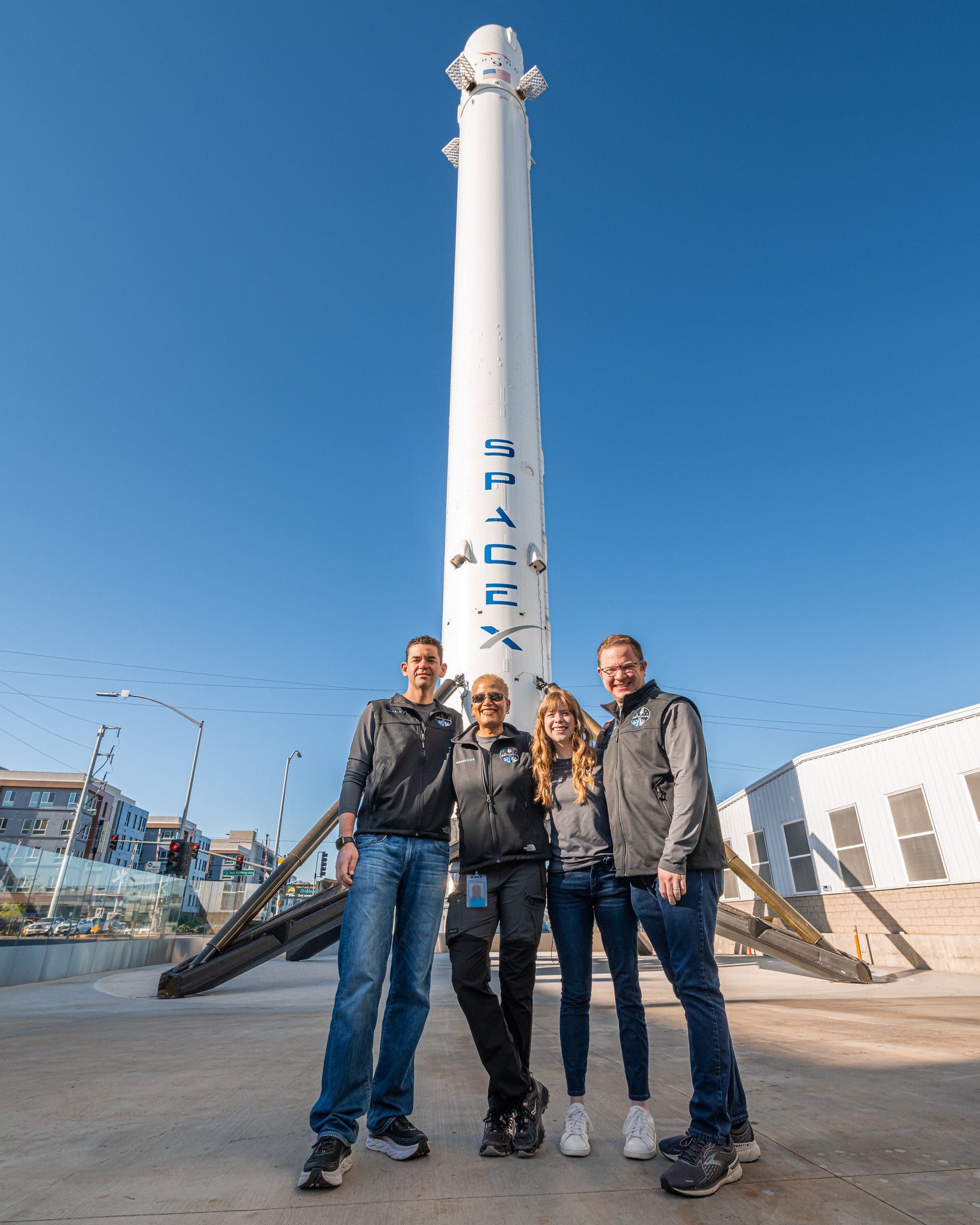
Inspiration4/John Kraus
Spaceflight confines astronauts to a small space for days, weeks, or even months with the same few people. They can't shower or use the bathroom the way they're used to. They strap in to sleep. In orbit, their sinus cavities fill with fluids, like having a constant cold. They miss their family and friends. And if something goes wrong, they may fear for their lives.
So keeping equipment on a spacecraft to help subdue a crew member in case of emergency isn't a new idea.
NASA has a plan in place if astronauts on the International Space Station or traveling into orbit become violent or suicidal.
In 2007, the Associated Press obtained NASA's written procedures, which instruct the crew mates of a dangerous astronaut to use duct tape or bungee cords to bind that person's wrists and ankles, and inject them with tranquilizers if necessary.
The agency did not respond to Insider's request for comment.
To alleviate the small chance that a crew member has an unexpected mental-health episode in space, like experiencing psychosis, NASA astronauts undergo extensive psychological assessments and check-ins before they launch to the ISS.
It's not clear what kind of assessments the Inspiration4 crew did. None of them have ever traveled to orbit, but they don't seem worried about the unlikely possibility that one of their fellow space tourists is going to lose it.
"Nobody's gonna snap that way, at least not that we've seen to date," Sembroski told Kramer on the podcast. "This is literally just, 'Ok, we have this equipment on board, well it's for that less than 1% chance of somebody needing a little bit of extra support just to maintain the safety of the crew.'"
Proctor, at least, has experienced some of the loneliness and isolation of being an astronaut before - during her participation in weeks-long simulations of moon and Mars missions.
"Sometimes, you know, there's a crew member you may want to kick out," she said in a press briefing on Tuesday. But she added that when the Inspiration4 crew ran a 30-hour flight simulation together, "there wasn't any of that."
"We lived together, we operated together, we had fun together," she continued. "And it got me so excited for when we do it up on orbit."
5 months of training to be a space tourist
To prepare for their mission, the Inspiration4 crew studied manuals, completed a program based largely on NASA's astronaut training, and hiked Mount Rainier together. They learned about the many parts of the Falcon 9 rocket and Crew Dragon spaceship, how everything works, and what can go wrong.
"We have like 3,000 pages across 100 different manuals. It was a lot. I don't think any of us really predicted that," Isaacman previously told Insider.
Isaacman has spent thousands of hours flying jets and ex-military aircraft, yet he said the training was still "more intense" than he expected, he said.
"I definitely underestimated it to some extent," he added.
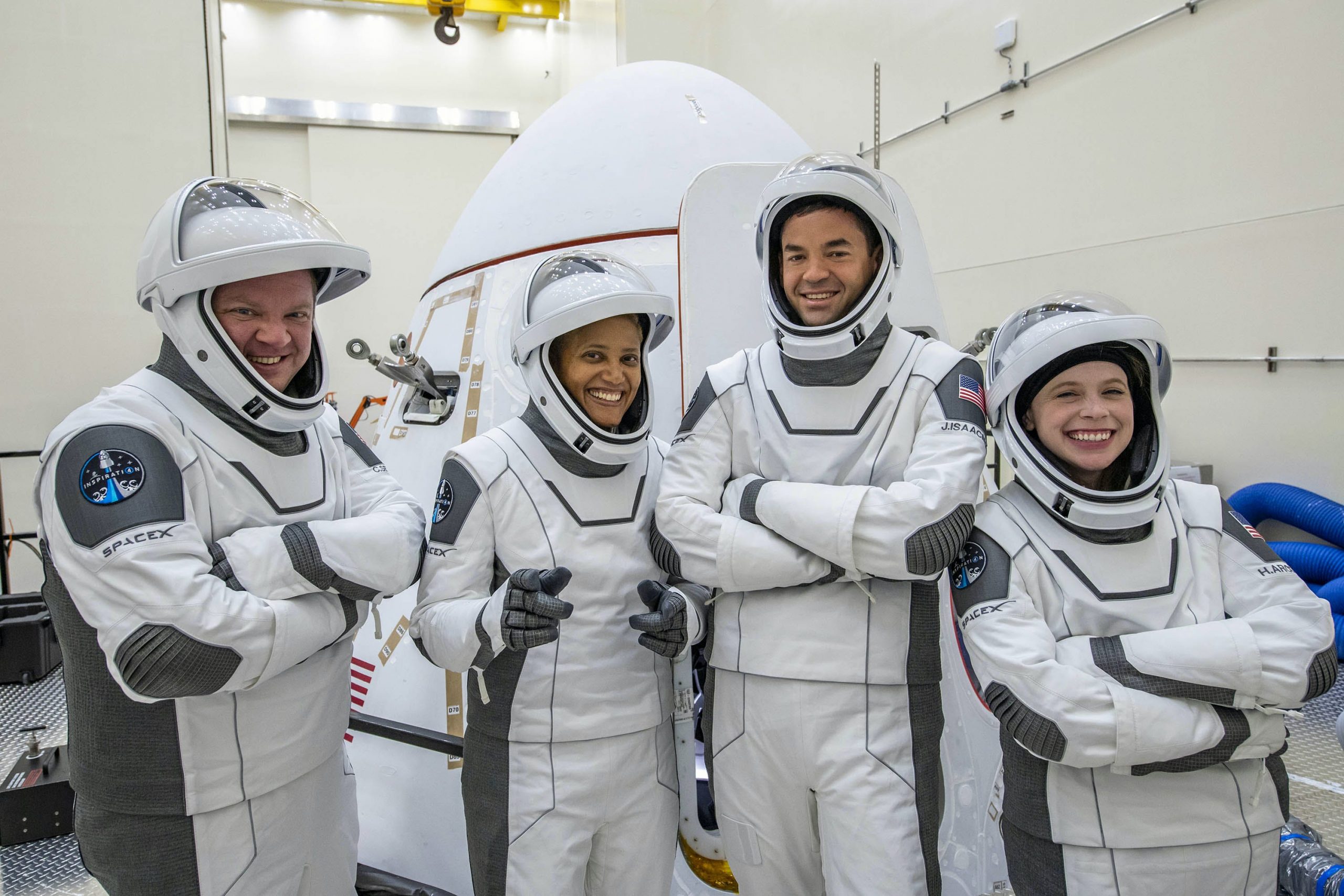
SpaceX
As part of the training, the crew members used a centrifuge to mimic the feeling of a rocket launch. The machine has an effect akin to a spinning carnival ride that presses you against a wall. The group also took a parabolic flight, during which a plane flies in arcs up and down to create up to 30 seconds of weightlessness at a time.
Isaacman and Proctor did fighter-jet training in Montana to brush up on their piloting skills, and the team spent time in a high-altitude chamber to experience the symptoms of oxygen deprivation, which could happen if the capsule loses cabin pressure.
Then in August, the group did their 30-hour simulation. Inside a Crew Dragon, they practiced a launch, ate a meal, and slept. Then they had to handle a hypothetical landing scenario in which they encountered problems with their navigation, flight computer, and communication systems.
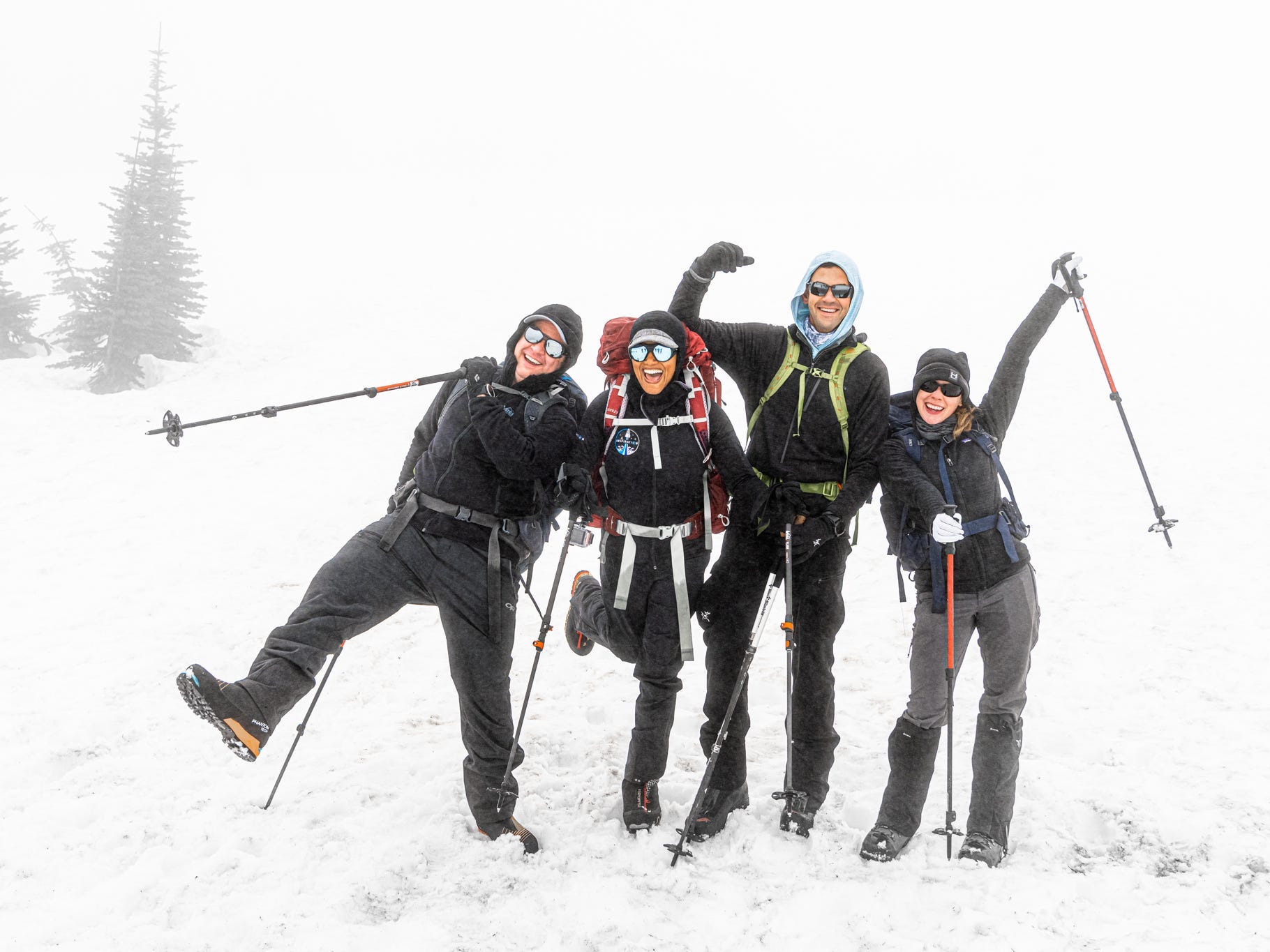
Inspiration4/John Kraus
Isaacman said he thinks the group's experience climbing Mount Rainier, a 14,410-foot active volcano covered in glaciers, will also prove useful during their spaceflight.
"They built some mental toughness. They got comfortable being uncomfortable, which is pretty important," he said. "Food sucks on the mountain. Temperatures can suck on the mountain. Well, that's no different than Dragon."
